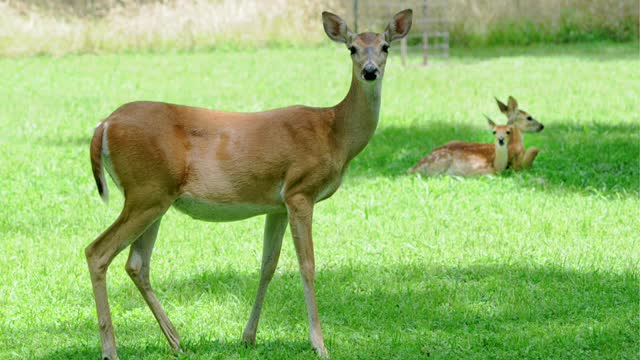Deer population explosion raises concerns for urban areas
June 19, 2024 | Universal City, Bexar County, Texas

This article was created by AI summarizing key points discussed. AI makes mistakes, so for full details and context, please refer to the video of the full meeting. Please report any errors so we can fix them. Report an error »

In a recent government meeting focused on wildlife management, experts discussed the increasing population of deer in urban areas and the implications for both the animals and local residents. The meeting highlighted the reproductive capabilities of female deer, or does, which can lead to significant population growth if not managed properly. The discussion emphasized that while does can produce twins, the lack of adequate nutrition in their environment can hinder the survival and health of these offspring.
As the peak fawning season approaches, experts noted a phenomenon known as \"predator swamping,\" where deer give birth in a concentrated timeframe to overwhelm predators. This strategy, while effective in the wild, has led to an increase in fawns appearing in residential areas, prompting concerns among residents who mistakenly believe these young deer are abandoned. Wildlife officials urged the public to leave fawns undisturbed, as they are naturally adapted to remain still and hidden from predators until their mothers return.
The meeting also addressed the factors contributing to the rising deer population, including habitat loss due to urban sprawl and the absence of natural predators. Urbanization has pushed deer into neighborhoods, where they often forage on gardens and landscaping. The experts pointed out that human activities, particularly supplemental feeding, exacerbate the problem. Many residents unknowingly attract deer by providing food that lacks essential nutrients, leading to unhealthy populations.
Participants were informed about the natural diet of deer, which primarily consists of forbs and browse, rather than corn or other human-provided foods. The meeting concluded with a call for residents to refrain from feeding deer and to understand the ecological balance necessary for maintaining healthy wildlife populations in urban settings.
As the peak fawning season approaches, experts noted a phenomenon known as \"predator swamping,\" where deer give birth in a concentrated timeframe to overwhelm predators. This strategy, while effective in the wild, has led to an increase in fawns appearing in residential areas, prompting concerns among residents who mistakenly believe these young deer are abandoned. Wildlife officials urged the public to leave fawns undisturbed, as they are naturally adapted to remain still and hidden from predators until their mothers return.
The meeting also addressed the factors contributing to the rising deer population, including habitat loss due to urban sprawl and the absence of natural predators. Urbanization has pushed deer into neighborhoods, where they often forage on gardens and landscaping. The experts pointed out that human activities, particularly supplemental feeding, exacerbate the problem. Many residents unknowingly attract deer by providing food that lacks essential nutrients, leading to unhealthy populations.
Participants were informed about the natural diet of deer, which primarily consists of forbs and browse, rather than corn or other human-provided foods. The meeting concluded with a call for residents to refrain from feeding deer and to understand the ecological balance necessary for maintaining healthy wildlife populations in urban settings.
View full meeting
This article is based on a recent meeting—watch the full video and explore the complete transcript for deeper insights into the discussion.
View full meeting
